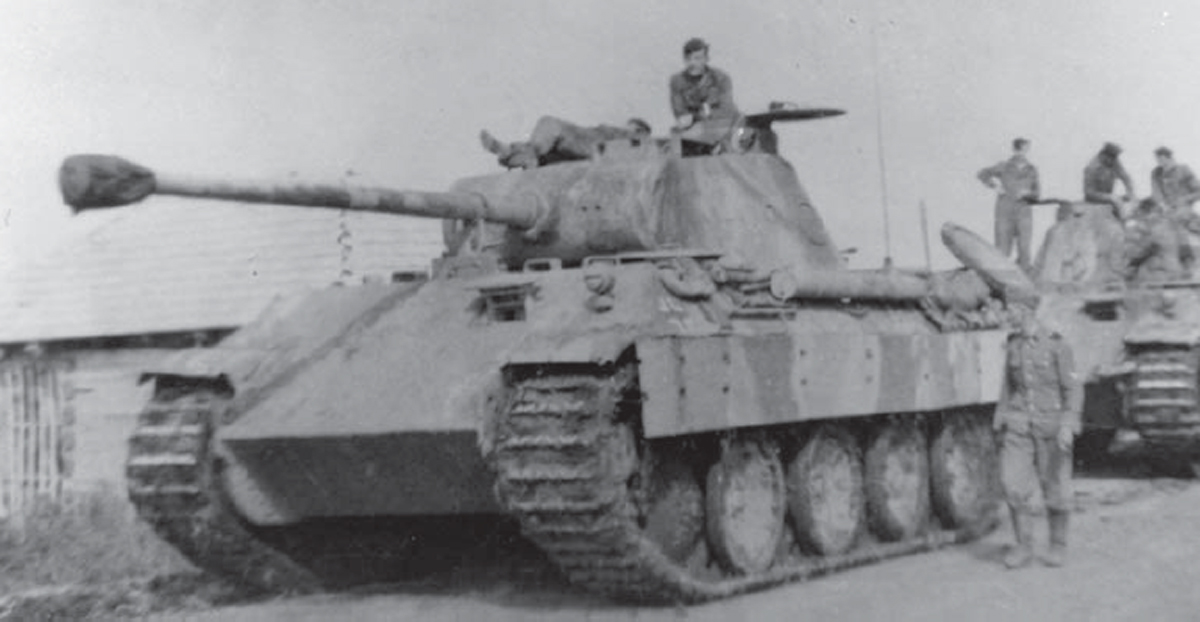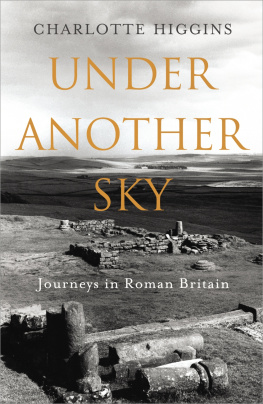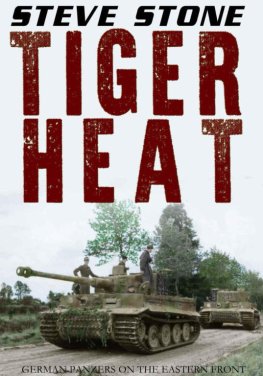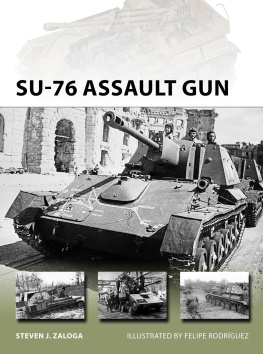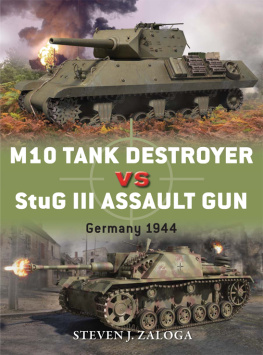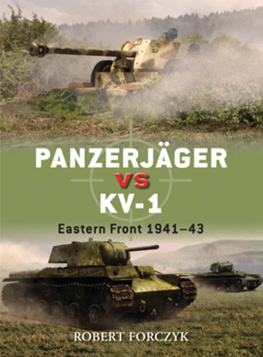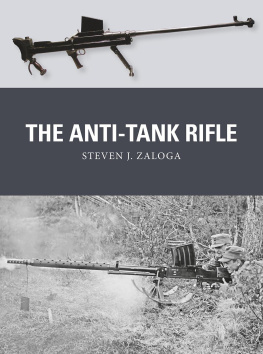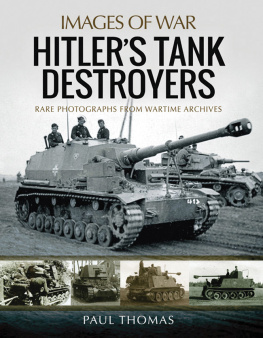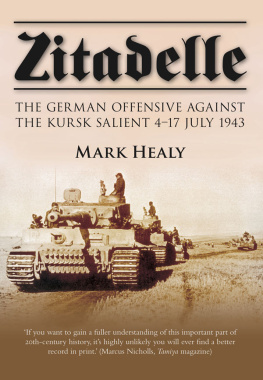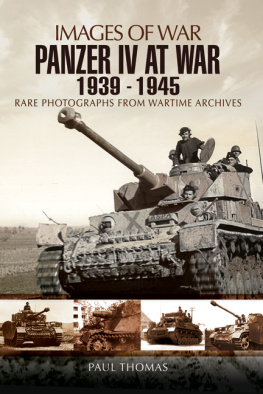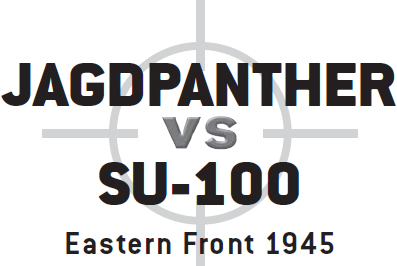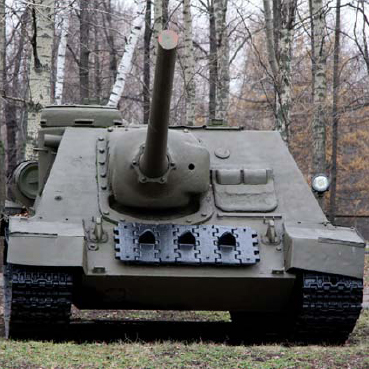DAVID R. HIGGINS
CONTENTS
INTRODUCTION
The road that led to the battlefield employment of the Jagdpanther and the SU-100 in Hungary during early 1945 began in the decade following World War I, when the success of rudimentary French and British armoured vehicles spurred the development of a myriad of vehicle designs, and doctrines on how best to employ the fledgling asset in a future conflict. Most nations viewed these in terms of light, medium and heavy based on weight or size, which were indicative of the roles they would undertake in combat. Gone were the evolutionary dead-ends such as the lumbering German A7V mobile fortress, and even the more successful, and ubiquitous, lozenge-shaped British Mark series vehicles, which housed the main armament on side sponsons. Throughout the 1930s, experimentation continued, such as with multiple turrets, often to provide vehicles with both HE (high-explosive) and AT (anti-tank) capabilities. Most configurations, however, came to incorporate characteristics that had made the French Renault FT design successful in World War I, such as a single, 360-degree-rotating turret mounting a primary armament, commanders cupola, small crew with a fighting and engine compartment physically separated, and capability to incorporate larger weapons.
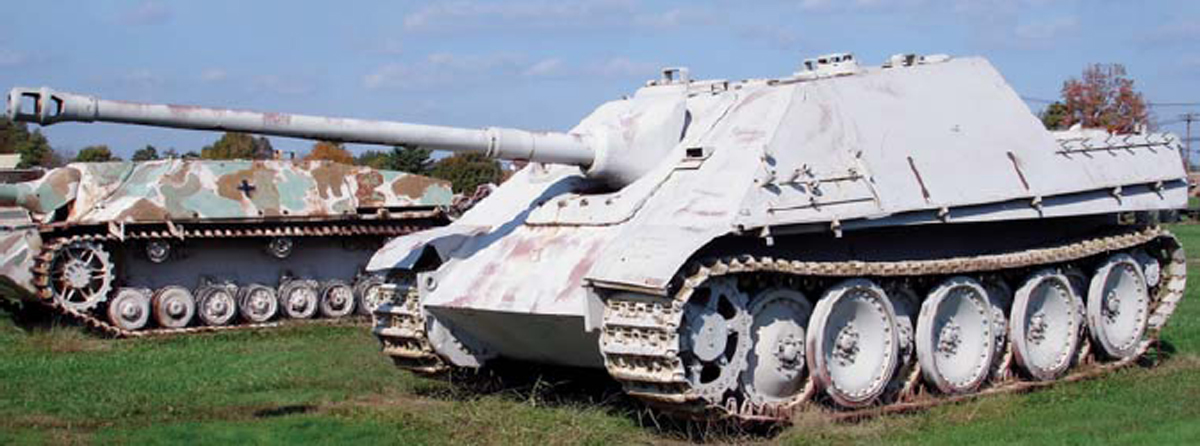
To improve upon the greater production times and costs of producing turreted tanks, the Germans mounted main armaments directly into existing chassis, such as the Panther/Jagdpanther and PzKpfw III/Sturmgeschtz III. This late-production Jagdpanther has a bolted mantlet, single driver periscope, and two-piece barrel. The horizontal piece along the lower hull was used to anchor 5mm Schrzen plates to provide some protection to the tracks; these plates were designed to prematurely detonate shape-charged rounds, thereby degrading their penetrative capability. A PzKpfw IV L/70 (V) is behind. (Seth Gaines, Aberdeen Proving Grounds)
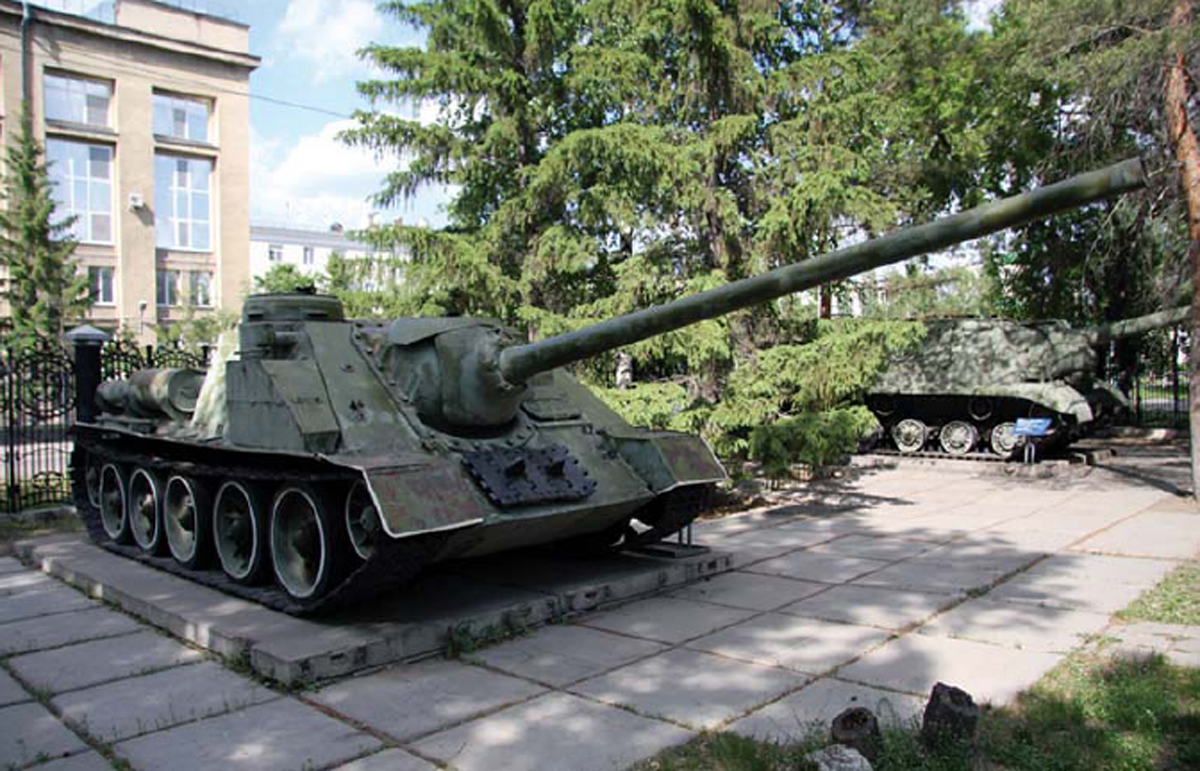
Much as the Germans had developed turretless assault guns that shared a chassis with tanks, that of the ubiquitous Soviet T-34 provided for a variety of vehicles, including the SU-85, SU-122 and SU-100. This is a good illustration of the SU-100s lengthy main armament. Its forward fuel tank port and light bracket (below) are visible on its starboard glacis. An ISU-152 SPG is behind. (Vitaly Kuzmin, Omichi Battle Glory Oblast Museum, Omsk)
Although arms manufacturing matured and expanded to increasingly provide armies with motorized and mechanized elements, the majority of troops remained foot- and horse-bound, and were unable to integrate with, and support, faster-moving armoured formations. One solution was to develop one armoured vehicle type for rapid penetration and exploitation roles, and another for providing slower infantry support. For the Soviets, this manifested itself doctrinally as fast, medium tanks, with integrated mechanized forces for shock operations, and a combination of light tankettes and heavy armour to support a more methodical, broader front. Although the Germans similarly envisaged tanks as part of a mutually supporting group, they preferred to keep them as a separate force to preserve their offensive punch, in which to undertake penetration and exploitation roles. With follow-on, foot-bound infantry requiring armoured assets to help overcome bunkers and built-up positions, in 1935 Oberst Erich von Manstein proposed incorporating Sturmartillerie (assault artillery) to fill the gap. Where tanks were well-suited for high-tempo offensive operations, these assault guns eschewed turrets in favour of increased armour protection and larger, more powerful main guns that were mounted into a built-up casemate atop a common chassis.
For the first few years of World War II in Europe, the Heer (German Army) achieved considerable battlefield success, due in large part to its relatively small, but well-led, -trained and -motivated armoured force. While existing German armour and anti-tank designs proved adequate in the rather limited-distance campaigns in Poland, Western Europe, France and North Africa, the large number of enemy armoured vehicles and seemingly endless spaces encountered during Operation Barbarossa, the invasion of the USSR in mid-1941, taxed German capabilities, and with the release of the newly developed Soviet T-34 medium tank, with its sloped armour, 76.2mm main gun, and excellent mobility and reliability soon exceeded them. As towed anti-tank weapons, such as the 3.7cm PaK 36, proved little more than a doorknocker against heavier Soviet armour, the Germans resorted to ad hoc solutions, including re-purposing their Sturmgeschtz (StuG) assault guns and high-velocity 8.8cm anti-aircraft guns. To help remedy this deficiency, makeshift Panzerjger (tank hunter) vehicles were cobbled together from obsolete domestic and captured foreign designs; their turrets were replaced with a fixed, semi-enclosed shield to protect the crew from bullets and shrapnel, and a more powerful, but limited-traverse, main armament substitute.
Unlike their German adversaries, the Soviets initially failed to see the benefits of turretless vehicles, in part because their utilitarian T-34/76 could be produced in great quantities. Having seen the successful role the German Sturmartillerie played in combat, and the lower production costs, the Soviets similarly began development of their own assault guns. Until late 1943, they had only two self-propelled gun options, a light, open-topped SU-76M for engaging enemy AFVs, and the medium SU-122, which was designed to engage softer targets with its howitzer. Both were viewed as mobile artillery, and organized accordingly into mixed regiments to provide integrated support for armoured and mechanized corps. As the war progressed, each side tried to maintain armour superiority, however fleeting; more sophisticated, closed-superstructure Soviet designs based on the T-34/76 and the heavy KV-1 increasingly took the field, and often in such numbers as to rival their fellow tanks.
The Soviets had by 1944 moved to the offensive along the entire Eastern Front, and the lack of a rotating turret made the SPG less suited than the tank to related exploitation and pursuit operations. Grouped into batteries, SPGs facilitated an infantry breakthrough into the rear of the oppositions defences either by advancing with the initial assault, or being held back as a reserve, and were only committed once the area to be assaulted had been more fully reconnoitred. Although vehicles such as the ISU-152 served in a heavy tank role during such actions, as its large main armament proved very effective against armoured and reinforced targets, the need to pivot repeatedly in order to engage multiple targets beyond the main guns traverse risked throwing the tracks or damaging the transmission, and meant such vehicles were better suited to being used defensively. The assault artillery was ill-suited for anti-tank actions in the offensive, although it could engage enemy armour in self-defence or from ambush positions at shorter ranges, using AP shells.
